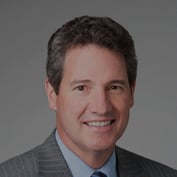Many people today appear to be seeking a riskless society. Evidence of this lies in the plethora of lawsuits filed each year by people and groups seeking to shift to others the costs of problems they encounter–preferably to someone with deep pockets. Lawsuits involving medical practice, product liability and class actions abound, raising the cost of doing business, both directly and indirectly.
And yet it is the risk takers who achieve the highest level of success in our society. There are few, if any, successful businesses or other endeavors that came into being without exposing someone to risk. Entrepreneurs have risked their fortunes and even their health to start an enterprise that had a high risk of failure, but with the hope of success. Risk can produce great rewards, but it also carries with it the potential for loss–or even disaster.
A case in point comes to mind: Sometime about 1968, a gentleman was referred to me for the purpose of developing an estate plan. He called, and we set a date and time to get together in my office. The date (about 2 weeks later) came and went, and he did not show up for the appointment. I was unable to follow up with a contact. About 3 months later, I ran into him at a local department store where he was shopping. I asked him why he did not keep the appointment we had set. He replied that there was no point in pursuing an estate plan, for he no longer had an estate. About that time, the stock market had crashed, taking along with it his hopes for the future. He was heavily leveraged, including a mortgage on his home, and in his stock purchases. Since he had no funds in reserve, when prices fell he was forced to sell, wiping out much of his net worth.
By way of contrast, I recall another incident in my early career. As a part of my training with New York Life, one of the assignments was to contact a local businessperson and seek their view on the use of life insurance. I contacted the owner of the company I had previously worked for. He was a very prominent businessman and owner of a chain of automotive supply stores around our state. I discovered he was a great believer in life insurance. He said life insurance had served him well in that it gave him the “freedom to take risks.” Through life insurance, he explained, he was always 100% liquid in the event of death, and the cash values of his and his companies’ policies provided a cushion against any business downturn.
He went on to say that over the years, he had made a lot of money by being free to take risks that others were forced to avoid for fear of loss. He also admitted that he had lost money in some of his ventures–but never had his back to the wall because of his reserves (much of which was the cash value of his insurance). He volunteered, as a final point, that of all of his ventures, life insurance was the one investment that had always delivered everything that was promised.








 April 09, 2006 at 04:00 PM
April 09, 2006 at 04:00 PM










